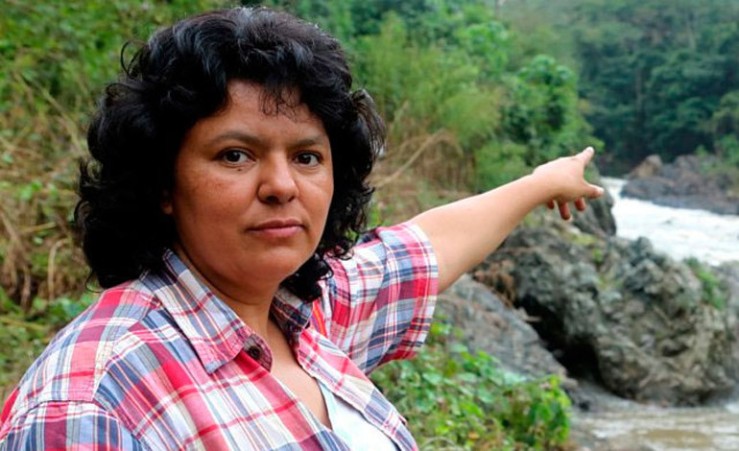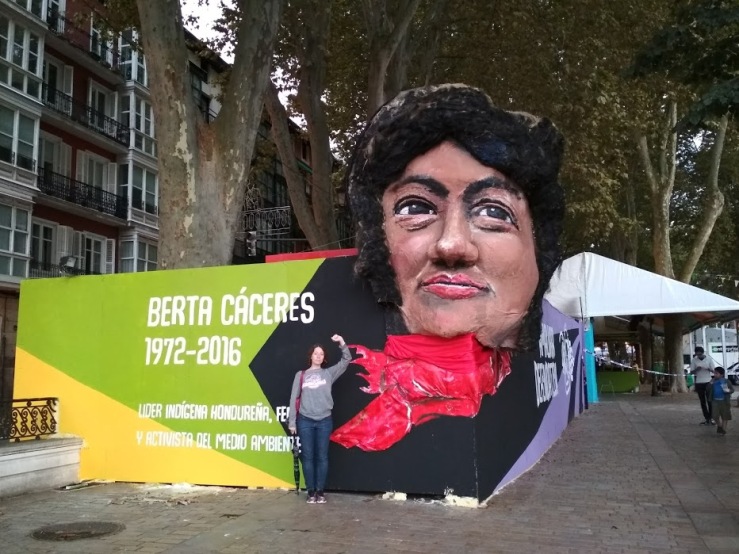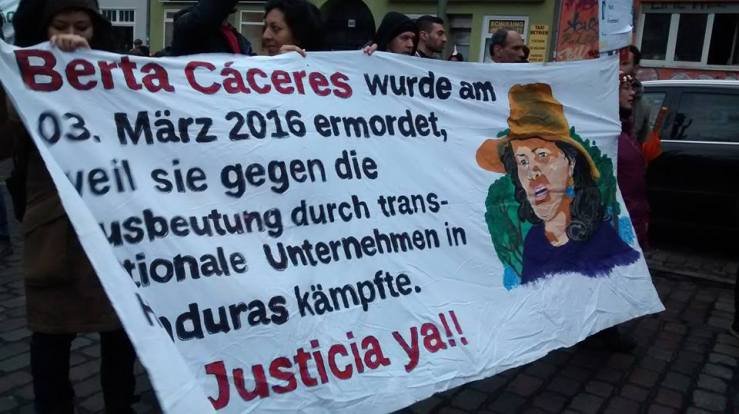Last November I was asked by Mosaik to write on the migrant caravan making its way from Honduras to the US border. Mosaik, an Austrian socialist Blog (yes, Austrian socialists exist!) translated and published my article available here:
For non-German readers, here is an earlier version of the article in English:
The US midterm elections have come and gone, and the refugee caravan made up of thousands of asylum-seekers from the northern triangle of Honduras, Guatemala, El Salvador continues to make its way towards the US-Mexico border. Asylum seekers are mainly young workers, mothers and babies, LGBT youth, and multi-generational families fleeing for their lives. They are running from drug cartels, political repression, sexualized violence, and poverty. Honduras is one of the most violent countries in Latin America, its murder rate skyrocketing after the US-supported coup in 2009. The US-friendly government has overseen massive privatization and environmental degradation, where taxes are low and femicides are high.
The caravan’s intent is simple: to reach the United States by walking. They do so with whatever clothes they have on their back and whatever shoes – often flip flops or foam clogs – they have on their feet. Luis Hernandez, who spent a week with the caravan between Chiapas and Oaxaca observed, “Hope is what is moving them.”
This act of defiance, buoyed by the sheer will to survive, disobeys national borders and points to two possible futures.
On one side is Trump’s vision of violent, exclusive borders that delineate non-citizens from citizens. By characterizing the caravan as “thugs,” “very bad people,” “gang members,” and an “invasion” he can justify a military response. This includes deploying up to 15,000 US troops at US-Mexico border and suggesting that US soldiers would shoot migrants if they threw stones, invoking Israel’s practice of shooting Palestinian youth armed with slingshots. Post-election, he has escalated the war on ‘foreigners,’ threatening to revoke the right to claim asylum and to reverse birthright citizenship. Concurrently, heavily armed far-right militias publicized their plans to go to the border to ‘assist’ border control. The scene has been primed for violence.
Using the caravan as a rallying point Trump has gone after Democrats, wildly claiming that they are for open borders and the abolition of Immigration, Customs, and Enforcement (ICE), the policing force which enacts detention and deportations. While a few left wing Democrats such as Alexandria Ocasio-Cortez have called for the abolition of ICE, party leaders have rejected this position and reaffirmed their support for border security. As Chuck Schumer reminded us in June:
Open borders, @realDonaldTrump? The bipartisan immigration bill I authored had $40 billion for border security and would have been far more effective than the wall.
Unfortunately, the Democrats have never been for open borders and have contributed significantly to border militarization, continuing deportations, and the criminalization of refugees and undocumented immigrants, which maintains a class of vulnerable and highly exploited workers. Over eleven million people are undocumented in the US, concentrated in agriculture, restaurants, meatpacking, construction, and housekeeping. The Democrats authored laws that support this caste system, such as Bill Clinton’s 1996 Illegal Immigration Reform and Immigrant Responsibility Act which established new grounds for deportation, penalties for illegal entry and re-entry, and mandates for detention of deportable noncitizens. In 2013, Barack Obama fast-tracked deportations by rejecting asylum requests and increased deportations for people charged with nonviolent crimes. When 70,000 unaccompanied minors from Central America made their way to the US-Mexico border in 2014, Obama approved deterrence measures, such as the first iteration child and family detention centers.
The right to claim asylum in the United States has also been whittled away over the years, through physical deterrence to slashed refugee quotas. This recent history goes back to Bill Clinton, who deployed the US Coast Guard to stop Haitian refugees from reaching US waters, a move that has been adopted by the EU. In 2014, Barack Obama pressured Mexico to shut off the southern border in order to deter refugees from making it to the United States in a move analogous to the EU outsourcing border control to Turkey and Libya. This has not stopped people from making the journey, but has made the journey more deadly.
On the other side of this nightmare is the solidarity of regular people. Wherever the caravan has passed, regular people have organized generous responses. Much like scenes of solidarity at German and Austrian train stations where hundreds of people came to welcome refugees in 2015, villages in Chiapas and Oaxaca have turned out to welcome the caravan. Chiapas and Oaxaca are the poorest of Mexico and the most indigenous. They also have a long tradition of social struggle from the rebel Zapatistas in Chiapas to the striking teachers in Oaxaca. In Juchitán, Oaxaca, which was badly damaged by an earthquake last year, the town turned out to provide food, water, and even a movie showing for the caravan. Along the route unions and villages have donated meals, buses and medical care, and organized basic shelter in town squares. As Radio Zapatista proclaimed, “it is not whether we, as Mexicans at the bottom have a little or a lot to share, but rather that those in the caravan have a greater need than us. That’s what solidarity is about.”
Every day, hundreds of people are forced to leave their homes and make the journey towards safety. Their journey is largely small, privatized, and silent. The current exodus of thousands exclaims publicly, “We are here. We are to be seen. We are human.” It is also a practical consideration, as moving as a group can protect refugees who are often victim to human smugglers, cartel extortion, and corrupt police. This is particularly the case for women and LGBT refugees, who face a higher risk of sexualized violence.
Even as politicians have little to offer the caravan, activist groups in the United States are organizing a Sanctuary Caravan to meet refugees at the US-Mexico border. Former soldiers Rory Fanning and Spenser Rapone have called on soldiers to refuse Trump’s deployment: “By every moral or ethical standard, it is your duty to refuse orders to “defend” the U.S. from these migrants. History will look kindly upon you if you do.” Dozens of demonstrations are being organized. These acts can counter the promised violence of the Trump administration.
Internationally, the working class is on the move, due to growing inequality, governmental violence, and increasing climate change. How the left responds to the question is the test of our generation. Will we choose borders- sites of exclusion and violence- or will we choose internationalism? In siding with the caravan, the simple act of walking becomes radical, opening towards a shared future.




